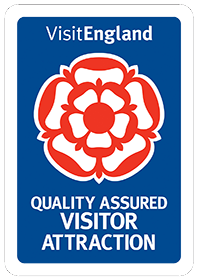Four pretty cottages are a lovely base for exploring ‘Constable Country’ – the landscapes of…
Our View
The Abbot’s Hall estate goes back to medieval times and part of the key to its years of efficiency was having its own farm, Home Farm. In the 1960s, the then owners of the estate, Misses Vera and Ena Longe, donated 70 acres of farmland, Home Farm, the hall itself, and gardens to be used as a museum after local collectors had amassed a huge array of historic local memorabilia. The result is the Museum of East Anglian Life, which features farming as well as day-to-day living. This all-weather museum, which opened its doors in 1967, is set in an attractive river valley site. It has seemingly endless woodland and riverside nature trails for you to follow. There are reconstructed buildings, including a working watermill, a smithy, a windpump, and the Boby Building that houses craft workshops. The refurbished Abbot’s Hall is open as part of the museum, and houses exhibitions across eight rooms. There are displays on Victorian domestic life, gypsies, farming and industry. These include working steam traction engines, the only surviving pair of Burrell ploughing engines of 1879, and a Suffolk Punch horse.
Awards, accolades & Welcome Schemes
Facilities – at a glance
Assist dogs allowed
Refreshments
Suitable for all child ages
Features
- Suitable for children of all ages
- Parking nearby
- Cafe
- Facilities: Buggies available for those with access needs, wheelchair friendly routes marked out. Abbot's Hall building has wheelchair platform lift and lift to second floor.
- Accessible toilets
- Open all year
- Opening Times: 10am to 4pm, Tuesday to Sunday. Open Bank Holiday Mondays and Mondays in the school holidays
Also in the area
About the area
Discover Suffolk
Suffolk is Constable country, where the county’s crumbling, time-ravaged coastline spreads itself under wide skies to convey a wonderful sense of remoteness and solitude. Highly evocative and atmospheric, this is where rivers wind lazily to the sea and notorious 18th-century smugglers hid from the excise men. John Constable immortalised these expansive flatlands in his paintings in the 18th century, and his artwork raises the region’s profile to this day.
Walking is one of Suffolk’s most popular recreational activities. It may be flat but the county has much to discover on foot – not least the isolated Heritage Coast, which can be accessed via the Suffolk Coast Path. Southwold, with its distinctive, white-walled lighthouse standing sentinel above the town and its colourful beach huts and attractive pier features on many a promotional brochure. Much of Suffolk’s coastal heathland is protected as a designated Area of Outstanding Natural Beauty and shelters several rare creatures including the adder, the heath butterfly and the nightjar. In addition to walking, there is a good choice of cycling routes but for something less demanding, visit some of Suffolk’s charming old towns, with streets of handsome, period buildings and picturesque, timber-framed houses.
Nearby stays
Places to Stay
Dining nearby
Restaurants and Pubs
Why choose Rated Trips?
Your trusted guide to rated places across the UK
The best coverage
Discover more than 15,000 professionally rated places to stay, eat and visit from across the UK and Ireland.
Quality assured
Choose a place to stay safe in the knowledge that it has been expertly assessed by trained assessors.
Plan your next trip
Search by location or the type of place you're visiting to find your next ideal holiday experience.
Travel inspiration
Read our articles, city guides and recommended things to do for inspiration. We're here to help you explore the UK.





























